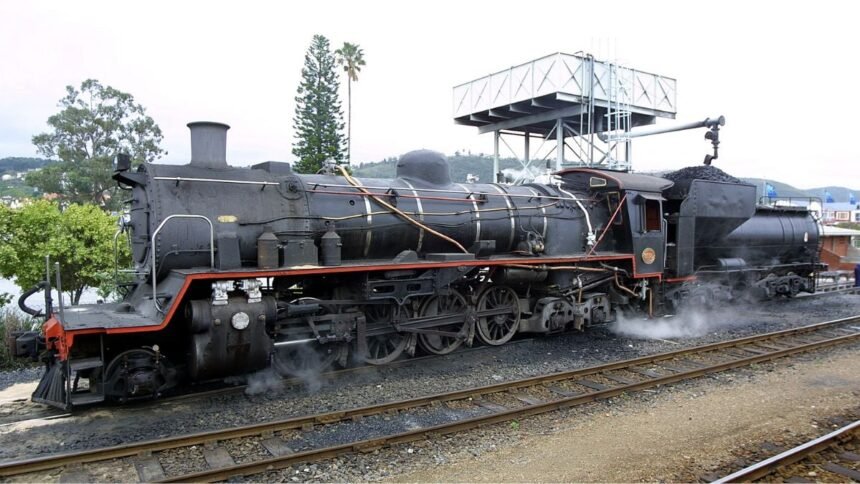Johannesburg: AfricUpdate – News Desk
One of South Africa’s most iconic steam trains is a step closer to returning to the tracks along the Garden Route after 15 years. The steam-powered train called the Outeniqua Choo Tjoe, which ran between George and Knysna and last operated in 2010, has been the focus of several unsuccessful revival attempts. Transnet Freight Rail has now confirmed that it has signed a 25-year concession agreement with the Outeniqua Choo Tjoe Company (OCTC) to manage and operate the line.
While no reopening date has been set, the agreement marks the most concrete progress in years toward restoring the line. “This is a model for public-private collaboration in the preservation and activation of strategic heritage infrastructure,” said Transnet CEO Michelle Phillips. “The Outeniqua Choo Tjoe is more than just a railway; it is a national treasure.”
The line, first constructed to serve both freight and passenger transport along the southern coast, became famous for its steam engines and scenic route through Victoria Bay, Wilderness, Sedgefield and Goukamma. It covered a 67-kilometre stretch between George and Knysna and was declared a preserved railway in 1992. By the early 2000s, it carried more than 100,000 passengers a year, about 70% of them foreign tourists.
That success ended abruptly in 2006 when severe flooding damaged key sections of the line. Temporary operations between George and Mossel Bay continued for a few years, but Transnet permanently closed the service in 2010, citing a lack of commercial viability. Since then, the train has become a symbol of lost tourism potential on the Garden Route, with repeated but stalled attempts to revive it.
In 2021, Transnet again called for private proposals to restore and operate the line. By September 2022, OCTC, led by Alan McVitty, was one of two bidders still in the running. Three years later, the company has now secured the concession. McVitty, who has been involved in efforts to restore the Choo Tjoe for over a decade, said the company’s immediate focus is to assess the condition of the line and the cost of restoration.
“What we’re doing now in the next two weeks is to reassess what the damage is on the line,” he told SABC News. “We’ve done site inspections over the last 20 years, but we haven’t been on the line for eight to ten years.” He said the reassessment would help determine the final capital expenditure needed to get the line operational again. “We need to reassess what the final capex is, but we’re aware that it’s going to be more, and we’ve made provision for that. But we need to know the exact number,” McVitty explained.
The OCTC team includes engineers, hydrologists, and restoration specialists – several of whom previously worked on the Kruger Shalati Train Hotel project completed in 2020. McVitty said they were aware of public anticipation for the train’s return but cautioned that the process would take time. “Everyone wants to get the Choo Tjoe steaming again as soon as possible, especially since it’ll have a real and positive influence on the local tourism economy,” he said.

Transnet’s decision to hand over the operation to a private concessionaire reflects a broader shift in how the state-owned company manages heritage and tourism-linked infrastructure. While Transnet will retain ownership of the line, OCTC will be responsible for its rehabilitation and daily operations. For residents and businesses along the Garden Route, the potential return of the Choo Tjoe is being watched closely.
The train was once a major tourism drawcard and provided employment opportunities tied to hospitality and transport. The Outeniqua Choo Tjoe was Africa’s last regularly scheduled passenger steam train, and its disappearance left a visible gap in South Africa’s heritage tourism landscape.




